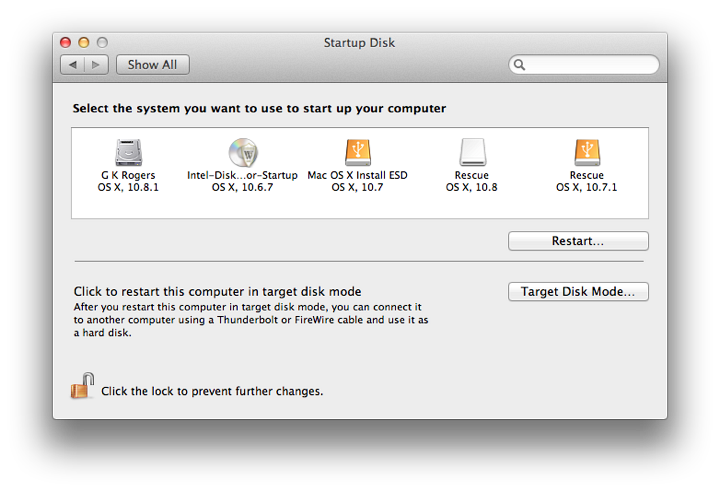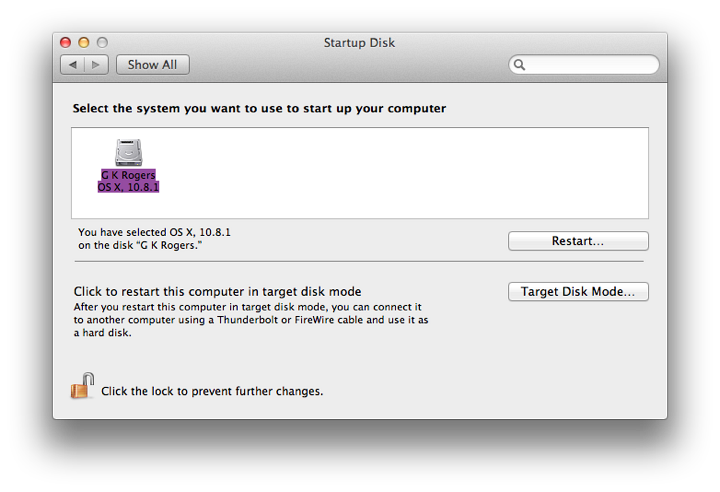System Preferences in OS X 10.8, Mountain Lion: Startup Disk

AMITIAE - Thursday 6 September 2012
|
System Preferences in OS X 10.8, Mountain Lion: Startup Disk |
 |
|
|
By Graham K. Rogers
Many panels in System Preferences have seen changes with the update to OS X 10.8, Mountain Lion. Startup Disk preferences appears to have remained mostly unchanged on the surface although there is one minor difference in the single pane.
Startup DisksThe Startup Disk preference panel has a single window in two parts. At the top are listed any disks or partitions available that the system recognizes as available to start the computer in OS X. In a normal environment, one disk is shown. With earlier versions of OS X there were two icons: the current disk and a Network startup (no longer shown).

The "current disk" icon (below) also displays data concerning the version of the operating system in use and the disk name when highlighted. This should be done when switching startup disks to ensure the correct disk is being used. It may be better for the disk to be highlighted in normal working to ensure that there are no delays on a restart. OS X is usually good at finding a bootable disk, but has been known to lose the plot.

Any disk with a usable operating system can be selected in this panel and the computer will restart from that. If the computer cannot be started in order to make such a selection, it may also be possible to find a bootable disk by restarting with the Option key pressed. I have more information on Startup Keys in an earlier article available online.
Target ModeThe bottom half of the Startup Disk panel is for access to Target Mode. This is a highly useful way to connect two Macs using a Firewire or Thunderbolt cable: one becoming the slave of the other. As newer Macs are able to use Thunderbolt connections, the panel instructions have been changed to reflect this change in available equipment.Target disk mode can help in diagnostics and repair. As an example I can run Disk Warrior on my MacBookPro to check and repair the disk on my iMac. It is also a method to transfer large quantities of data quite quickly. The computer will start in Target disk mode when the button (bottom right) is pressed. The target Mac should be connected to a (master) computer before using Target mode. Target mode may also be activated by starting a computer with the T key pressed. The screen on a Mac being used in Target mode will display a large Firewire icon while used in this way. At the bottom of the Startup Disk panel, is a lock icon which requires an Admin password to open. This makes it less easy for someone to start the computer using an external disk. If used in conjunction with the Firmware Password Utility, the computer is considerably more secure. With Mountain Lion this feature may be found in the repair utilities accessed by starting the computer using the Command + R keys.
Graham K. Rogers teaches at the Faculty of Engineering, Mahidol University in Thailand. He wrote in the Bangkok Post, Database supplement on IT subjects. For the last seven years of Database he wrote a column on Apple and Macs. |
|

For further information, e-mail to

|

|